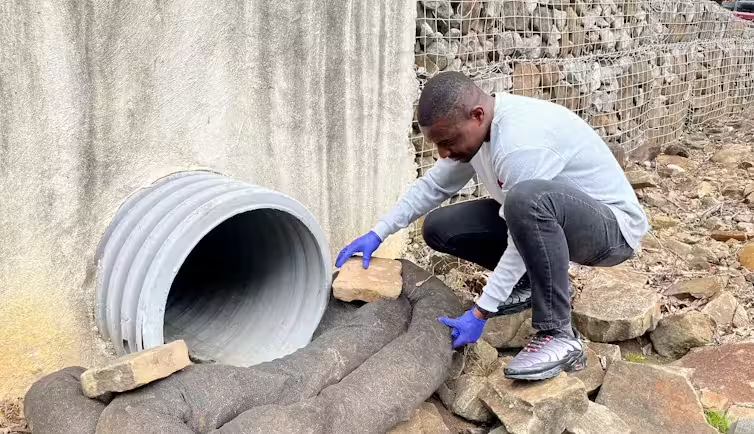4 Minutes
The Overlooked Connection Between Car Tires and Microplastic Pollution
Each year, millions of car owners replace worn-out tires, but few realize that this routine maintenance has a significant environmental impact. As tires degrade through everyday use on road surfaces, they release microscopic particles largely composed of synthetic rubber—known as tire wear particles. These microplastics now represent an estimated 45% of microplastics found in both terrestrial and aquatic environments worldwide, making car tires one of the most significant contributors to the global microplastic crisis.
How Tire Wear Pollutants Enter the Water Cycle
Tire wear is a constant process exacerbated by friction with pavement. Each rotation releases microplastics, which settle on roadways until rain events wash them into the environment. Stormwater runoff carries these particles from roads and parking lots into drainage ditches, then into streams, rivers, lakes, and ultimately the world’s oceans. Recent studies have uncovered the prevalence of these particles at alarming scales—for example, environmental chemists in Oxford, Mississippi, detected more than 30,000 tire wear particles in just 24 liters of stormwater runoff after rain events, with expectations that numbers are far higher in urban zones with dense traffic.

The Environmental and Biological Toll
Tire microplastics are not only a physical pollutant; they are infused with complex chemical additives used in modern tire manufacturing. These chemicals can leach from microplastics into aquatic habitats, becoming part of the food chain. Fish, crabs, and oysters frequently ingest tire wear particles, inadvertently accumulating toxic compounds. Alarmingly, recent research has linked specific tire-related chemicals to mass mortality events in sensitive fish species. For example, over 50% of coho salmon returning to spawn in Washington State died before reproducing, largely due to exposure to 6PPD-Q—a hazardous transformation product formed when the antioxidant 6PPD, routinely added to tires to prolong their lifespan, reacts in the environment.
Tire-Derived Microplastics and Human Health Risks
While the impact on wildlife is striking, humans are not immune. Tire microplastics and their associated chemicals can become airborne, especially in areas with heavy vehicular traffic, posing inhalation risks to people and animals living nearby. A Chinese study found traces of 6PPD-Q in both children’s and adults’ urine, raising concerns about broader exposure pathways. Although the long-term effects are still under investigation, early studies suggest 6PPD-Q and related tire-derived compounds may pose health risks to major human organs such as the liver, kidneys, and lungs.
Seeking Solutions: Filters Made from Agricultural Waste
With no viable substitute for 6PPD currently available according to tire manufacturers, scientists are exploring ways to intercept tire microplastics before they contaminate waterways. Research teams at the University of Mississippi are pioneering low-cost filtration methods using locally sourced agricultural byproducts like wood chips and biochar—a porous, charcoal-like material produced through pyrolysis (heating rice husks in a low-oxygen environment).
Experimenting with Biofiltration
The researchers designed and installed biofiltration units containing a mixture of pine wood chips and biochar at the outlets of stormwater drains. During two separate storm events, they measured tire wear particle concentrations in runoff before and after filtration. The results were considerable: these filters removed up to 90% of tire microplastics from the collected water. The principle lies in the materials’ physical and chemical properties—biochar’s extensive surface area and pore structure, enhanced by its chemical reactivity and stability, make it highly effective at ‘trapping’ contaminants. Similarly, the organic complexity of wood chips helps adsorb and immobilize microplastics and associated toxins. Sand filters, often used in water treatment, were notably less effective in comparison.

Challenges, Prospects, and the Path Forward
Biomass-based filters offer several ecological advantages—they are affordable, sustainable, and widely available due to their derivation from agricultural waste products. This approach allows for community-level deployment, particularly beneficial in areas with limited resources. However, to ensure safety and scalability, continued research is essential, especially regarding the long-term integrity and potential secondary pollution from filtration materials that have not undergone complete pyrolysis. Like all filtration systems, these biofilters require regular maintenance and responsible disposal protocols to prevent contaminant build-up and release back into the environment.
Conclusion
Tire wear has emerged as a major and often unrecognized source of global microplastic pollution, threatening aquatic ecosystems, wildlife, and potentially human health through its biochemically active particles. As the search for safer tire additives continues, research into practical, scalable interventions such as biomass-based biofilters provides hope for mitigating microplastic contamination—turning locally sourced plant waste into powerful tools for community-driven environmental stewardship. Robust monitoring, cross-sector collaboration, and public awareness will be vital to address the growing challenge of tire-derived microplastics and to safeguard both ecosystem integrity and public health.
Source: theconversation



Comments